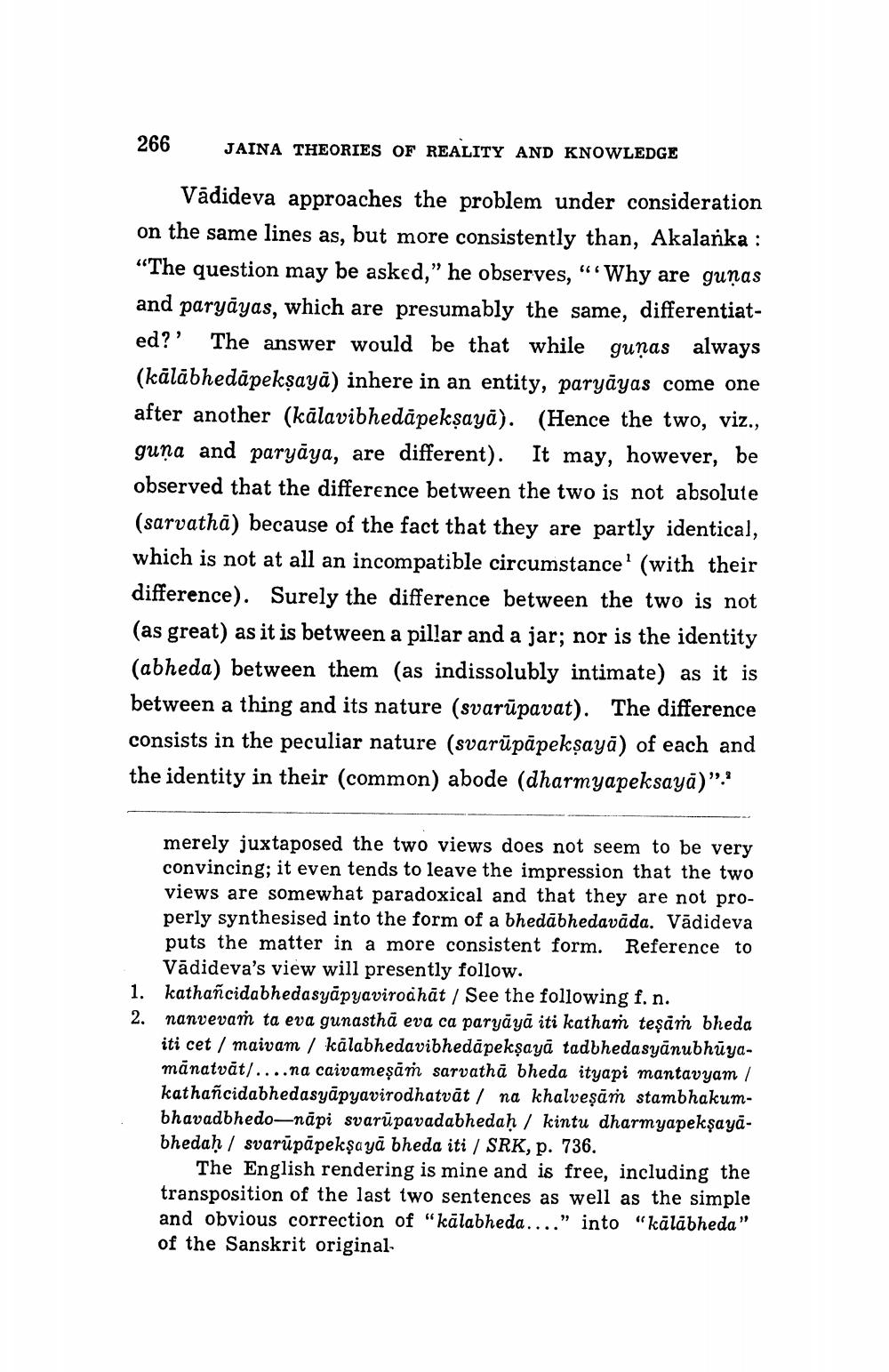________________
266 JAINA THEORIES OF REALITY AND KNOWLEDGE
Vādideva approaches the problem under consideration on the same lines as, but more consistently than, Akalanka : “The question may be asked,” he observes, "Why are guņas and paryāyas, which are presumably the same, differentiated?' The answer would be that while guņas always (kālābhedāpekṣayā) inhere in an entity, paryāyas come one after another (kālavibhedāpekṣayā). (Hence the two, viz., guņa and paryāya, are different). It may, however, be observed that the difference between the two is not absolute (sarvathä) because of the fact that they are partly identical, which is not at all an incompatible circumstance' (with their difference). Surely the difference between the two is not (as great) as it is between a pillar and a jar; nor is the identity (abheda) between them (as indissolubly intimate) as it is between a thing and its nature (svarūpavat). The difference consists in the peculiar nature (svarūpāpekṣayā) of each and the identity in their (common) abode (dharmyapeksaya)”'
merely juxtaposed the two views does not seem to be very convincing; it even tends to leave the impression that the two views are somewhat paradoxical and that they are not properly synthesised into the form of a bhedābhedavāda. Vādideva puts the matter in a more consistent form. Reference to
Vadideva's view will presently follow. 1. kathañcidabhedasyāpyaviroahāt / See the following f.n.
nanvevam ta eva gunasthā eva ca paryāyā iti katham teşam bheda iti cet / maivam / kalabhedavibhedāpekṣayā tadbhedasyānubhūyamānatvāt/....na caivameșāṁ sarvathā bheda ityapi mantavyam / kathañcidabhedasyāpyavirodhatvāt / na khalveşām stambhakumbhavadbhedo-näpi svarūpavadabhedaḥ / kintu dharmyapekṣayābhedaḥ / svarūpāpekṣayā bheda iti / SRK, p. 736.
The English rendering is mine and is free, including the transposition of the last two sentences as well as the simple and obvious correction of "kālabheda...." into "kālābheda" of the Sanskrit original.




